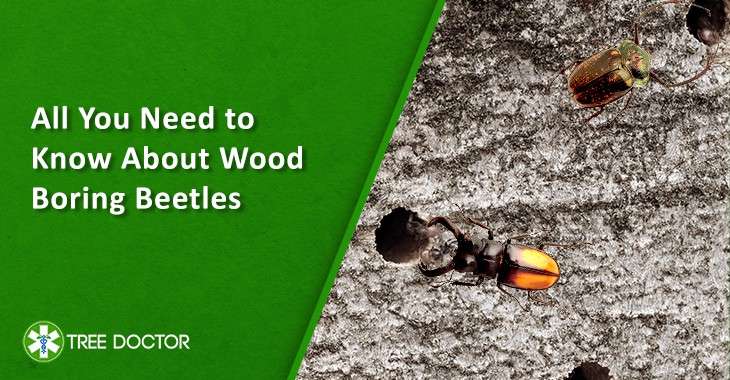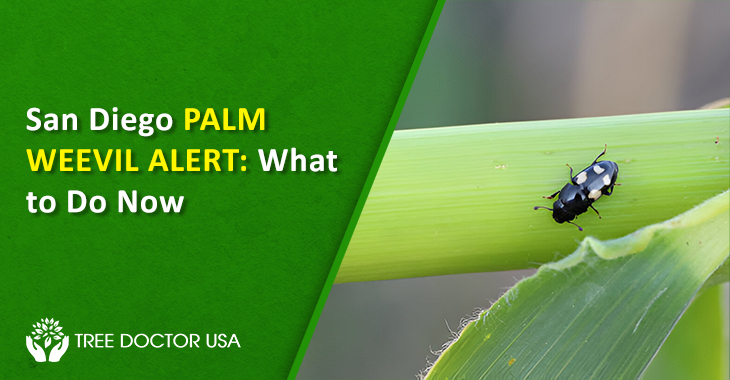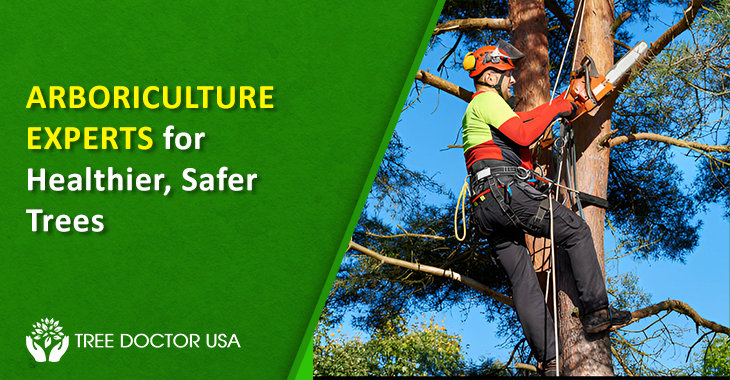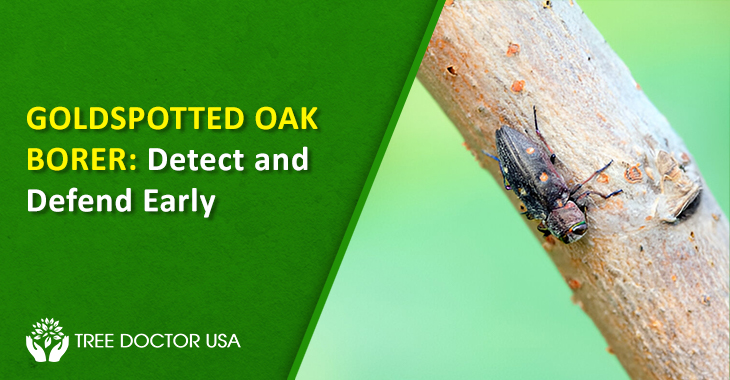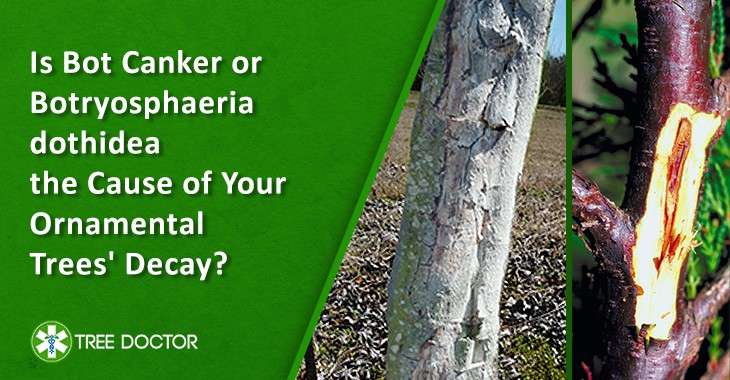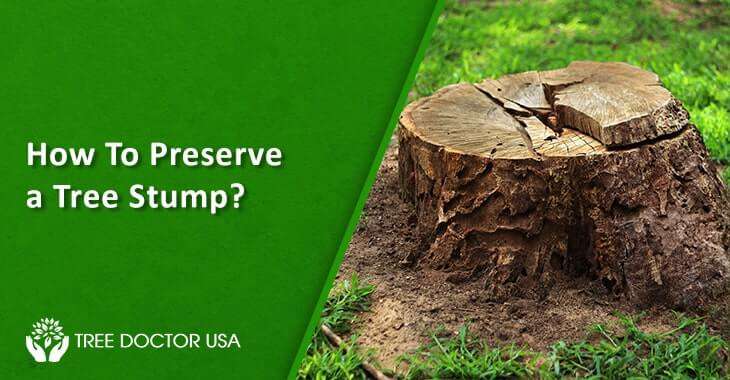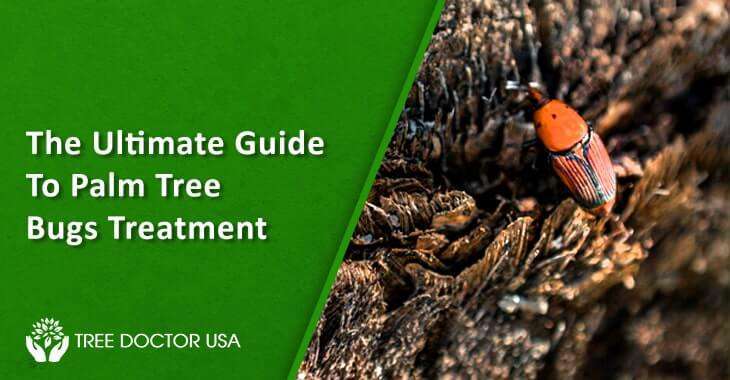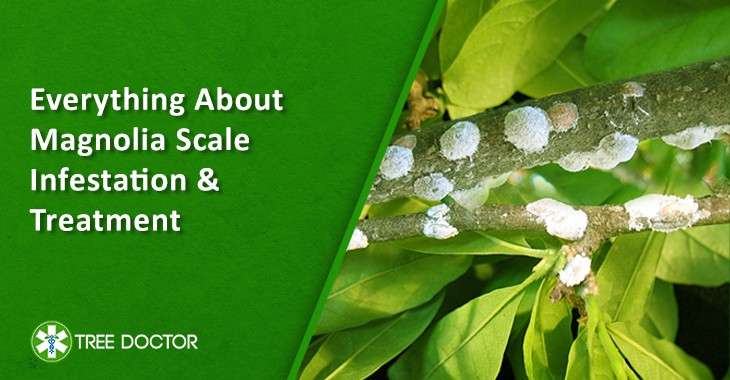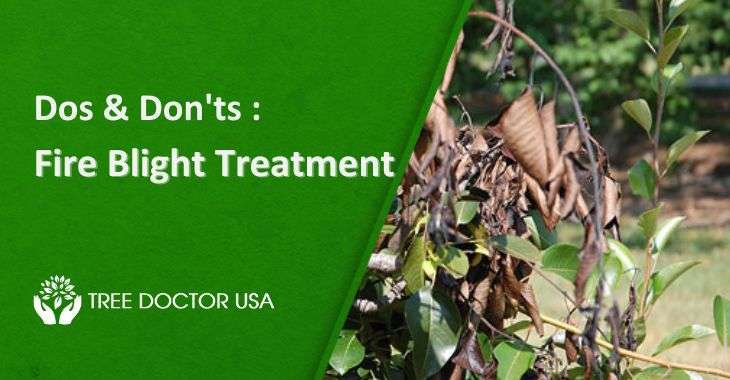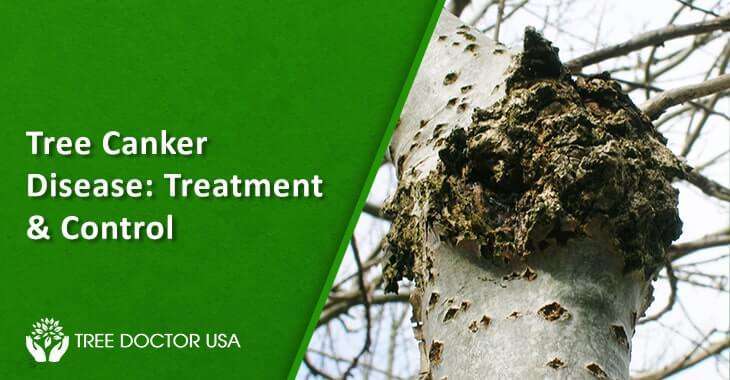All You Need to Know About Wood Boring Beetles
If you notice holes in tree trunk and branches, there can be an infestation of a wood boring beetle. Tree borers are small insects that burrow into trees, causing severe damage to the tree’s structure and health. These pests are difficult to control and can quickly destroy a tree if left unchecked.
Tree borers are a type of beetle that feeds on wood. There are several different types of borers, each causing damage in a different way.
The most common wood boring beetles include the powder post beetle, furniture beetle, and house borer. These pests feed on the sapwood of hardwoods and softwoods alike, creating tunnels that weaken the tree’s structure and decrease its overall health.
Tree borers can cause significant damage to trees by feeding on the wood and disrupting normal tree functions. These pests may also lay eggs inside the tree’s trunk, causing further damage and weakening the tree’s structure. Tree borers typically attack trees that are already weakened or stressed, which can make the tree more susceptible to disease and other problems. So, tree borer treatment from professionals becomes crucial.
Identify The Species Of Wood Boring Beetles
There are many different species of wood boring beetles, each with its own set of characteristics and behaviors. Some common species of tree borers include the emerald ash borer, the flat-headed apple tree borer, and the bronze birch borer.
Emerald ash borer beetles are small, metallic green insects that typically measure between 1/8 and 1/2 inches in length. These pests are native to Asia and were first discovered in the United States in 2002. Emerald ash borers feed on the wood of ash trees, causing severe damage to the tree’s structure and health.
Flat-headed apple tree borers are another common type of wood boring beetle. These pests are small, brown insects that measure 1/3 to 3/4 inches in length. Flat-headed apple tree borers feed on the wood of the apple, mulberry, and other trees, causing extensive damage to the tree’s structure and health.
Bronze birch borers are small, bronze-colored insects that measure 1/8 to 1/2 inches in length. These pests feed on the wood of birch trees, causing severe damage to the tree’s structure and health. If left unchecked, bronze birch borers can quickly kill a tree.
While each type of wood boring beetle presents its own challenges, all types of tree borers have the potential to cause significant damage. You offer accurate tree borer treatment as soon as possible to minimize the risk of severe infestation. To prevent re-infestation, it is crucial to inspect trees regularly for signs of damage and treat any infested wood in your landscape. Additionally, it is vital to maintain healthy trees by providing proper nutrition and care. With careful monitoring and maintenance, you can protect your trees from severe wood boring beetle damage.
Biology And Habits Of Wood Boring Beetles
Most wood boring beetles go through a complete metamorphosis, meaning they have an egg, larval, pupal, and adult stage. The time it takes to go from egg to adult can vary based on species and temperature but is generally between 2 months and 2 years.
The female beetle will lay her eggs on or near the host tree, where they will hatch and feed on the tree’s soft inner bark. During this phase of development, the larvae may also bore into the tree’s sapwood or heartwood. After reaching adulthood, the beetles will leave their host tree to mate and reproduce.
Woodboring beetles are notorious for causing significant damage to trees and other wooden structures. These pests bore into the wood of their host tree, causing extensive damage to the tree’s vigor and health. In some cases, woodboring beetles can completely destroy a tree. Additionally, these pests may also vector diseases that can further damage or kill the tree.
Wood boring beetles are often complex to control once they have infested a tree or other wooden structure. So, how to get rid of wood boring beetles? Well, to prevent significant infestation, it is essential to regularly inspect trees and other wooded areas for signs of damage and to treat any affected areas as soon as possible. Additionally, maintaining healthy trees by providing proper nutrition and care can help reduce the risk of severe damage caused by wood boring beetles. With careful monitoring and maintenance, you can protect your trees and other wooden structures from the destructive effects of wood boring beetles.
Signs Indicating Wood Boring Beetle Infestation
There are several signs that can indicate a wood boring beetle infestation, including:
- Presence of small holes or tunnels in the tree’s bark or wood
- Visible sawdust or frass near the tree’s base
- Damaged or dying branches or leaves
- Discoloration or decay of the tree’s wood
- Holes in the bark of the tree for exit routes
- Bark that is peeling or cracked
- Larvae or adults crawling on the tree or the ground nearby
If you see any of these signs of wood boring beetle infestation on your trees or other wooden structures, take immediate action to treat the affected areas and protect your trees. With regular monitoring and prompt tree borer treatment, you can help minimize the risk of severe damage caused by wood boring beetles.
How to Get Rid of Wood Boring Beetles?
There are several options for treating wood boring beetle infestations. The best course of action will depend on the severity of the infestation and the type of beetle involved. Some common treatment options include:
- Treat and care infested wood
- Apply chemical insecticides to the affected area
- Encourage natural predators, such as woodpeckers, to feed on the beetles
- Accurate treatment of infested trees
- Apply biologically-based insecticides to the affected area
- Trunk and soil injection to restrict the growth of the beetles
With prompt treatment, you can help prevent wood boring beetles from causing extensive damage to your trees and other wooden structures. For more information and tips on how to get rid of wood boring beetles infestation, talk to our professional arborist or pest control expert.
Ways to Prevent and Control Wood Boring Beetles
Several steps can be taken to prevent and control wood boring beetles. These include:
- Inspecting trees and other wooden structures regularly for signs of infestation, such as holes or tunnels in the bark, frass, or sawdust near the base of the tree, damaged or dying leaves and branches, etc.
- Treating infested areas promptly with chemical or biological insecticides
- Encouraging natural predators, such as woodpeckers, to feed on the beetles
- Injection to trunk and soil to limit the growth of beetles
- Maintaining the health of trees by providing proper tree nutrition and care.
By taking these steps, you can help reduce the risk of wood boring beetle infestation and the damage they can cause.
Takeaways
Wood boring beetles are often difficult to control once they have infested a tree or other wooden structure. To prevent significant infestation, it is crucial to regularly inspect trees and other wooded areas for signs of damage and to treat any affected areas as soon as possible.
There are several signs that can indicate a wood boring beetle infestation, including visible sawdust or frass near the tree’s base, damaged or dying branches or leaves, and exit holes in the bark.
Some common treatment methods for wood boring beetle infestations include treating and caring for infested wood, applying chemical insecticides accurately to affected areas, and maintaining health with balanced nutrition. The wood boring beetle treatment cost will vary depending on the severity of the infestation and the type of beetle involved. However, offering tailored treatment to wood boring beetle is crucial.

